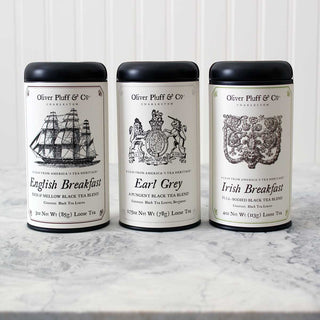The price of tea in England declined during the 18th century. Now able to afford this commodity, English laborers included tea in their budgets for the first time. A study of such budgets published by Sir Frederick Eden and David Davies discovered that 9% of one’s average earnings was spent on tea, most notably the popular Bohea tea, between 1740 and 1822.[1]
In 1774, the average household income in the American South among the rich was $705, per free household, and $461, per household with slaves. This income was not based on the wage earner’s occupation, but rather a combination of the value of their property and occupation.[2] Converted to the Pound Sterling (£), the currency of the English during the 18th century, $705 was equivalent to £536.90.[3] The pound can be further broken down into 20 shillings (s) or 240 pence (d), where 1s is equivalent to 12d.[4]
In January of 1720, the British East India Company’s Bohea tea arriving in the colonies cost 24s per pound of tea.[5] In the coming decades the price of tea varied greatly between the “early price of 24 shillings per pound of tea to a low of 1 shilling 9 pence per pound of tea.”[6] By December of 1749, competition from the Dutch East India Company forced the British Company to lower their price to 6s6d per box.[7] The English did not feel too threatened because “buyers would always go to the cheapest market.”[8]
Due to parliament’s taxations on tea, such as the stamp act and the 25% importation tax, the British East India Company was unable to make their tea sales impervious to competition. The colonists could purchase tea from the Dutch for 2 shillings 2 pence a pound and then smuggle it into the colonies for only 3 shillings per pound of tea. Purchased from the British, the same tea would cost merchants 4 shillings 1 pence after all the duties. For the merchant-smuggler, one Bohea chest of tea resulted in an extra earning of £20.[9]
[2] “Appendix 4- The richer colonial South: More evidence,” American incomes ca. 1650-1870, accessed July 25, 2016, http://gpih.ucdavis.edu/tables.htm.
[3] “CoinMill.com- The Currency Converter,” Stephen Ostermiller, last modified July 25, 2616, accessed July 25, 2016, http://coinmill.com/GBP_USD.html#USD=705.
[4] M. Boyanova, “British Money,” accessed July 25, 2016, http://www.studyenglishtoday.net/british-money.ht...
[5] Peter Kalm, The America of 1750 Peter Kalm’s Travels in North America: The English Version of 1770, ed. Adolph B. Benson, Vol. II (New York: Dover Publications, Inc., 1966), 658.
[6] Lee Hardluck Humphrey, “Tea and Coffee Trade in the American Colonies,” accessed July 20, 2016, http://www.oliverpluff.com/tea-and-coffee-trade-i...
[7] Kalm, The America of 1750 Peter Kalm’s Travels in North America, 670.
[8] Francis Samuel Drake, Tea Leaves: Being a Collection of Letters and Documents Relating to the Shipment of Tea to the American Colonies in the Year 1773, By the East India Tea Company (Boston: A. O. Crane, 1884), XIV.
[9] Humphrey, “Tea and Coffee Trade in the American Colonies.”


